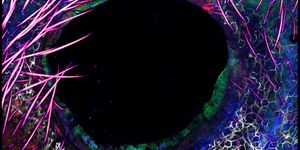Opening a Champagne Bottle Creates Shock Waves like a Fighter Jet
A new study led by Gérard Liger-Belair, a professor of chemical physics at the University of Reims Champagne-Ardenne in France, in the field of physics included a celabration favorite: champagne. In this work, their team created an experiment that used a few bottles of rosé: two at 86 °F and two at 68 °F. These bottles were set to be aged at 42 months old, during this time, a process called ‘prise de mousse’ happens. This term, when translated from French, means ‘capturing the froth’. The yeast in the liquid in the bottle interacts with the sugar creating carbon dioxide gas. This is called secondary fermentation, and is the reason for the bubbliness of champagne. Now, the carbon dioxide gas is stored under high pressure because the bottle is corked. When we open the bottle, this gas is released at an extremely high pressure causing shock waves. The shocking part of these shock waves is that their intensity is equivalent to the ones created by a fighter jet.
Following this, the researchers used a high-speed camera to capture photos of the moment the corks burst. The high-speed camera was connected to a microphone that recorded when the cork popped and triggered the camera to take pictures.
They witnessed that once the cork was opened, the carbon dioxide and water vapors that were trapped had crystallized due to the sudden change in pressure and left the bottle in the form of a fog, which we all have probably seen whenever a champagne bottle is opened. The big revelation of this study was that within the first millisecond of the opening of the bottle, the pressure change inside the bottle was enough to cause shock waves called ‘Mach disks’. This was a phenomenal result since these exact shock waves are formed from the exhaust of the fighter jets, because of a similar phenomenon. The high-pressure gas is released into the air at a speed almost twice the speed of the sound or more. The beauty of physics is sometimes hidden in very small things and now we can appreciate it next time we open a bottle of champagne for celebration!
Source: sciencemag.org, livescience.com








